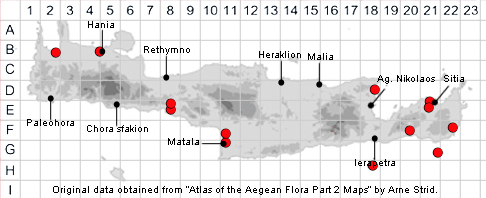SPECIES DESCRIPTION
BRASSICA TOURNEFORTII
Family and Genus:- See- CRUCIFERAE
Common Name:- None
Homotypic Synonyms:- Brassica barrelieri subsp. tournefortii, Brassica
tournefortii var. leiocarpa, Coincya tournefortii, Erucastrum tournefortii.
Meaning:- Brassica (L) A name used by the Roman naturalist and philosopher
Pliny for various cabbage-like plants.
Tournefortii (L) For Joseph de Tournefort (1656-1708), renaissance
plant systematist.
General description:- Annual, rarely perennial.
Stems:-
1) Up to 50 cm.
Leaves:-
1) Lower, numerous, rosulate, very shortly petiolate, runcinate-pinnatifid, with 7-10
pairs of obtuse lobes, hispid, especially along the thick, white mid-vein, and
ciliate.
2) Cauline, few, sessile, more or less entire, glabrous.
Flowers:-
1) Remaining erect after anthesis.
2) Sepals, suberect, sparsely hispid or glabrous.
3) Petals, 5-7 mm, narrowly oblong-obovate, pale yellow, usually violaceous at the
base, becoming whitish.
Fruit:-
1) Siliqua, 35-65 x 2·5-3 mm, constricted at intervals, very shortly stipitate,
attenuate into a 0- to 2-seeded beak 10-20 mm long. 1/3-1/2 as long as the
valvar portion.
Key features:-
1) Beak of siliqua, 10-20 mm, shorter than the valves.
2) Flowers, remaining erect after anthesis.
3) Petals, 5-7 x 1·5 mm, small and narrow.
Habitat:- Sandy fields, dune slacks, wasteground, usually near the sea. 0-50(-350)
m.
Distribution:- W. and C. Mediterranean from Portugal eastwards to Italy and
Greece, including N Africa. Very limited distribution on Crete mainly around the east
and west coastal regions.
.
Flowering time:- Mar to early May.
Photos by:- Dr. Armin Jagel
